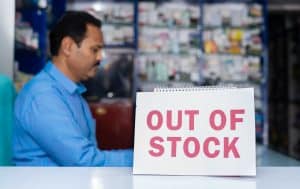Supply chain risks are once again close to all-time highs, according to the Chartered Institute of Procurement and Supply. The group’s Risk Index assesses risks in 132 countries across a range of categories to calculate the global supply risk score. Only five countries saw operational risks improve in the last quarter.
The index, which runs from 0 (no risk) to 100, is now at 78.7 – up from 23.7 in 1994.
The variety of factors that have driven it up, including political turmoil in Europe and economic slowdown in China, will impact each business differently. However, it is also the result of more general and longer-term trends that have more universal applicability.
As CIPS economist and Cranfield School of Management senior economist John Glen told reporters, supply chain complexity is a big factor: “Supply chains have become a lot more complex in the past 20 years. It’s not necessarily the case that there is more risk out there but that our supply chains touch them more.”
There are no “safe havens” for international supply chains, Glen added.
A lot of businesses accept this. Nevertheless, many companies decide to invest in potentially riskier geographic regions to gain access to emerging market places, where the reward is judged to outweigh the operating risks. In doing so they face challenges such as infrastructure reliability and water scarcity issues, which are becoming critical in many areas. In Latin America, for example, Brazil has suffered a historic drought coupled with a dependency on hydroelectric power, resulting in its regional risk score deteriorating in Q1 2015.
In this context, as we’ve noted, there is the potential to gain competitive advantage from more resilient supply chains. However, businesses face a number of challenges in seeking to build resilience. The first is to know in what areas of the business, skills and solutions to invest, given the complexity of the supply chains, and the fact that innovations aimed at supply chains can be a little hit and miss. Moreover, it is not always easy to address deficiencies even once this is established.
Securing skilled personnel falls firmly into this category. The growing skills gap in supply chains is increasingly acknowledged, and was a key theme in Deloitte’s most recent Supply Chain Survey. Fewer than four in ten (38%) of the executives it surveyed thought their organization had the competencies around supply chains required. Only a slightly higher proportion (43%) considered their supply chain was strong when it came to strategic thinking and problem solving.
Supply chain technology needs to address both these challenges: offering solutions that are proven and that can also deliver answers to skills shortages and the complexity of modern supply chains. For those that accept the importance of the supply chain and the need for investment, such criteria should be central to how decisions to address it are made.
